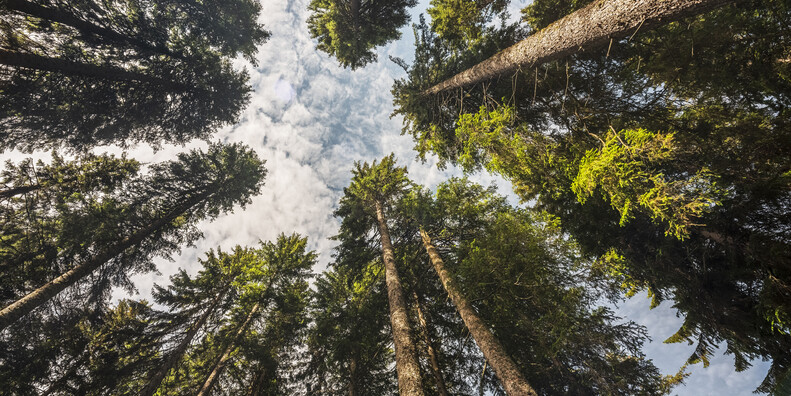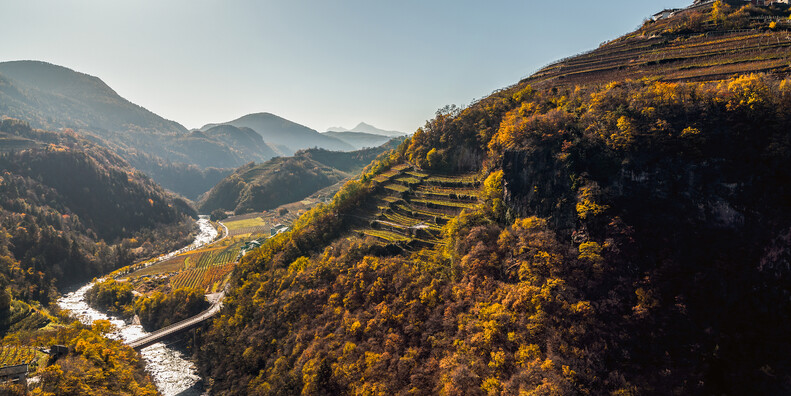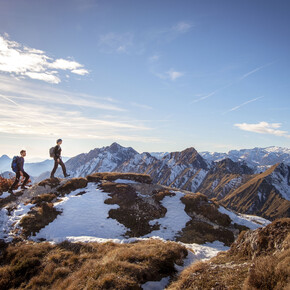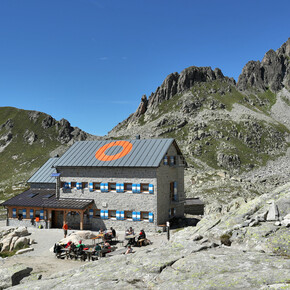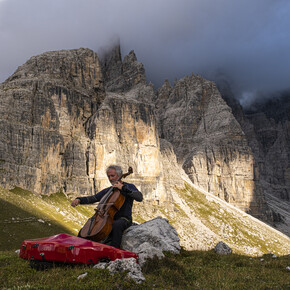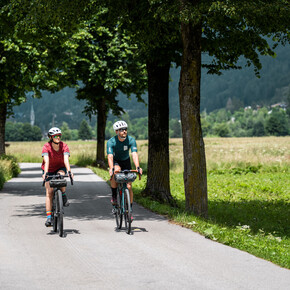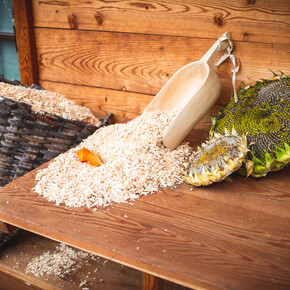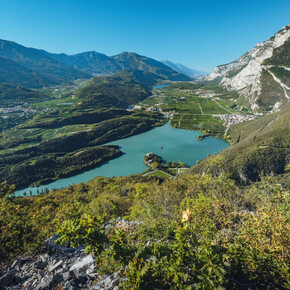VAL DI FIEMME, THE LAND OF WELLNESS
The “green lung” of Trentino is rich in parks and forests. In 2026, it will also play host to the Milan-Cortina Winter Olympic Games thanks to latest-generation sporting facilities.
Val di Fiemme, September 2022 - Nestled among Trentino’s UNESCO World Heritage Dolomites, along the banks of the Avisio river, Val di Fiemme sprawls between altitudes of 1,200 and 2,200 metres between two nature parks: Paneveggio-Pale di San Martino, with its deer reserve, and Monte Corno with its infinite variety of bird species.
Also known as Valle dell’Armonia (Harmony Valley), Val di Fiemme is home to spruce trees which produce a tonewood once favoured by Stradivarius himself, and now beloved by luthiers all over the world.
The territory around Val di Fiemme acts as a giant green lung: the woodlands which have been managed under the local regulations of the Magnifica Comunità di Fiemme since the year 1111 now count 60 million trees (3,000 trees for each inhabitant). They are able to capture 2 million tonnes of CO2, as demonstrated by the FSC certification obtained by the Magnifica Comunità di Fiemme.
MUSICAL INSTRUMENTS ALL OVER THE WORLD
Rare spruce plants growing in the forests of Fiemme — which a handful of expert woodsmen can identify without felling — also produce a highly prized tonewood once used by Antonio Stradivarius and other master luthiers in the 1600s and 1700s, such as the Guarneri and Amati families.
Thanks to its extraordinary mechanical and acoustic characteristics, which have been studied and tested in modern times by many universities and research laboratories, tonewood from spruce trees is still highly sought after and used to make soundboards for string instruments including violins as well as organs, pianos, and other instruments which are played all over the world.
It’s no wonder that Val di Fiemme is often known as the “Forest of Violins” in the musical world, or sometimes Val Paganini...
The tradition of making soundboards, which has roots that go far back in the history of this valley, is now carried on by the company Ciresa di Tesero, which has become an international benchmark for makers of musical instruments.
A FOREST LOVED BY LUTHIERS
There are incredibly few European forests — no more than ten — from which the fine wood used to make violins and other musical instruments can be obtained.
One of these is the Val di Fiemme forest, a magical place where the entire life cycle of this prized raw material can be witnessed.
The wood mainly comes from spruce trees which grow under highly specific circumstances, featuring a unique combination of soil and climate.
Of the 12,000 cubic metres of timber taken every year from the Paneveggio forest, only a tiny amount — between 20 and 50 cubic metres — has the necessary qualities to be transformed into musical instruments. These qualities include a specific weight, elasticity, stability, good workability and, above all, a high ratio in terms of the speed of ultrasound transmission in longitudinal and transverse directions, in relation to the fibres.
A TRADITION OF WORKING WITH WOOD
There are many artists and craftspeople in Val di Fiemme who carry on the tradition of working with wood.
Of particular note are the little statues used for nativity scenes, part of an ancient tradition that finds expression during the Christmas period every year, when displays are set up along a route through the historic centre of Tesero. Some examples even date back to the 1700s/1800s.
Another long-standing custom is rustic carpentry: this includes not only making wooden furniture, but also panelling for rooms. One such room is the “stube”: a type of living room typical of houses in Val Fiemme, made all the more cosy and welcoming by an open hearth fuelled, naturally, by wood.
From spring to autumn, Fiemme is an open-air spa where mind and body can be rejuvenated thanks to over 70 guided experiences. Fiemme boasts one of the world’s highest outdoor museums, Respirart, where the “seggiovia” (the chairlift used to access it) has been transformed into a “seminovia”, combining transport and sowing seeds. As guests fly through the air above the park, they are invited to scatter seeds of Val di Fiemme’s wealth of floral species on the earth below. These hayseeds are capable of enriching even the most barest meadow, preserving biodiversity.
Val di Fiemme is a “renewable energy district”, with all its municipalities committed to replacing fossil fuels with renewable energy sources. In Cavalese, for example, 80% of the residential area is heated by biomass from wood-working waste in the district heating plant of Bioenergia Fiemme. Sawdust is used to produce FiemmePellet, a 0-km fuel marketed in the area. The branches of the magnificent fir trees yield an essential oil used in cosmetics and in the wellness sector. And that’s not all: the recent construction of the Predazzo Biolake represents a sustainable management system in terms of both the environment and water resources. The Biolake is fed by an underground well that guarantees a constant exchange of water, which is purified thanks to the presence of certain plants. Moreover, this well has been identified as a possible reserve of drinking water for the town. The valley is also one of the top-rated municipalities when it comes to separating waste for collection.
Fiemme also boasts social wellness, with over 300 active associations for the valley and for promoting sports and charity.
The rich sporting tradition has been confirmed by the decision to hold the cross-country skiing, Nordic combined and ski jumping contests here as part of the upcoming 2026 Milan-Cortina Winter Olympics.
Val di Fiemme is a region of production like nowhere else in Italy and throughout the entire Alpine range, where wellness has become the economic driver, with internationally renowned companies specialising in different sectors — sport, food, high standard of living and music — but which all share a common vision that centres care for people and respect for the environment.
The following companies have their roots in Val di Fiemme: Starpool, which has been a landmark business in the sector of mental and physical well-being for over 45 years, with wellness projects conducted all over the world; La Sportiva, a leader in the manufacture of climbing and hiking shoes, which minimises the environmental impact of its products and regularly publishes a sustainability report; Pastificio Felicetti, which offers one of the market’s most authentic and delicious lines of single-grain pasta, made with spring water and dried in the pure air of the Dolomites; Fiemme Tremila, which has specialised in biocompatible and 100% wholesome wooden flooring and furnishings for around 30 years; and, finally, Ciresa di Tesero, the makers of soundboards for musical instruments who have given voice to around 160,000 pianos throughout the world, created with tonewood from Fiemme spruce trees.
VALLE DI CEMBRA, “HEROIC VITICULTURE” IN A HISTORIC RURAL SETTING
Today, a visitor arriving via state road SS612 will find, after all the twists and turns on the way up from Valle dell’Adige, Valle di Cembra suddenly opening up before them: a stunning enclave surrounded by jagged mountain skylines and scored deeply by the course of the Avisio river. Its steep slopes display an unbroken scene of terraces in red porphyry, a beautiful local stone, covered in vines and dotted with villages and houses here and there.
The centuries-long work of cultivating these steep hillsides has resulted in a standardised, harmonious landscape characterised by mixed farming practices. In fact, vines grown on small estates were almost always accompanied by other crops, vegetables and fruit trees, as well as arable crops and, above all, the meadows and pastures necessary to keep some livestock, an essential element of the domestic economy.
The vine-covered terraces of Val di Cembra’s landscape has even won a place on Italy's “National Register of Historical Rural Landscapes”. The reasoning for this inclusion is given as follows: "The Valle di Cembra countryside spreads over an area of 2,243 hectares, 30% of which is used for terraced wine-growing. The history of Valle di Cembra begins in pre-historic times, but it wasn’t until the medieval period that the local economy began to be based on wine-making activities, with the mountainsides being moulded for agricultural purposes. Thanks to the particular suitability of the area for grape-growing, a deep-seated culture of wine sprang up over the course of centuries; to this day, this means that high-quality wines are produced while the characteristics of the historic landscape are preserved.
The area on the register consists of the lower part of Valle di Cembra and features the widespread presence of vines, organised in narrow terraces held up by dry-stone walls, grown in accordance with the practice of using pergolas traditional to Trentino. Despite the difficulties linked with high production costs, the local population are highly sensitive to the need to preserve and nurture the historic landscape. The Autonomous Province of Trento embraces the challenge of recovering, preserving and improving the terraced rural landscape through activities ranging from the agricultural sector to the monitoring of processing, and even training initiatives for the labourers involved in restoring and maintaining the dry-stone walls (...).
The history of wine-growing in Valle di Cembra has ancient roots, as demonstrated by the discovery of a situla from the later Iron Age, a piece of ceremonial pottery for wine engraved with the Rhaetic alphabet. Wine from Trentino grew in prestige in the years to follow, during Medieval and modern times. During the Middle Ages, there were many places in Valle di Cembra used as vineyards, as indicated in notary documents, and wine was used to purchase wheat. The rural landscape, naturally, had already taken shape.
To this day, despite the changes that have taken place over recent decades, the peculiarities of this historic landscape are plain to see:
- the widespread cultivation of vines over much of the land, to the extent permitted by soil conditions and exposure;
- a continuous system of terraces and other hydraulic-agrarian arrangements, which highlight the ancient relationship between mankind and the land;
- the historic system of using pergolas in Trentino to support the vines, which still characterises much of the vine-growing land in the present day;
- the system of historic constructions (lodges, farmhouses, etc.);
- the current network of roads, which developed on top of the historic one;
With these characteristics, Valle di Cembra represents a traditional historic landscape which remains capable of supporting a thriving economy and society, strongly rooted in local identity and vines.

